Table of Contents
The history of the Chevrolet Blazer goes long back. It was launched as a two-row midsize crossover in 2019. Cut to 2024; the Chevrolet Blazer EV will be a new addition to the Blazer family as Chevy takes the SUV with the storied name into the electric realm of auto dom (gas-free version) for 2024.
So, what is the buzz around the Chevrolet Blazer EV?
The car has it all– with its own distinct body and interior. Blazer is fitted with an EV propulsion system. The new entrant model uses General Motors’ Ultium battery technology, and the model with the most range will be the RS trim, which Chevy says will go up to 520 km on a single charge.
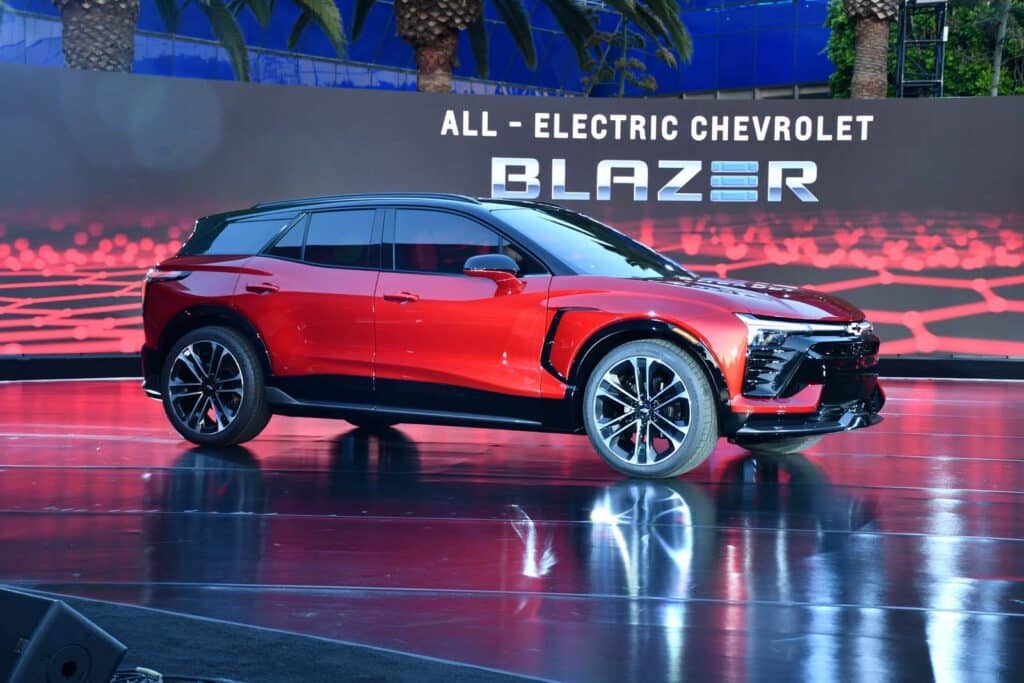
Oh, we didn’t explain one thing. The car comes with three trims– the mid-range LT and RS models launching first and the performance-oriented SS coming second. The base 1 LT comes with a smaller motor on the front axle and is a hit among many youngsters because of the small or medium battery. The 2LT with a larger battery rear up the mileage to 470 km and offers the optional rear motor of AWD (all-wheel drive).
The sportier RS trim comes with a choice of either FWD, RWD (with the larger rear motor), or AWD (with the smaller rear motor). If you are worried about electrification then SS will help you put your mind at ease. Also, RWD comes with more horsepower.
With the outline of the blog, we are sure you know the gist– that the article is a review blog. But before that, there are specifications and our verdict on what we liked and what we didn’t.
| EPA Classification | Sports Utility Vehicles (SUV) |
| Drivetrain | All Wheel Drive |
| Engine Type and Required Fuel | Electric |
| wheelbase | 121.8 inches |
| Length | 192.23 inches |
| Front track width | 69.5 inches |
| Rear Track width | 69.5 inches |
| passenger/seating capacity | 5 |
| Steering Type | Non-Variable Electric Power |
| Price | $56,715 |
HIGHS
Fantastic ride on rough terrains, contemporary tech features kept in mind to attract GenZ, spacious cabin, and cargo area for road trips.
LOWS
Pricey, AWD reduces the range to below 480 Km, and the steering lacks feedback.
VERDICT
If you want a competent SUV with a broad array of available powertrains, then go for it.
EV Motor, Power, and Performance
As we said in the verdict, there is a buffet of complicated powertrain configurations than rival EV SUVs. The entry-level LT is available with FWD and AWD. AWDs are powered by two electric motors, which give 288 horsepower.
The RS gets a more powerful single motor and robust 340 horsepower. We recommend this Blazer EV as it’s quicker off the line. But if the budget is not a concern, then the range-topping SS model.
The model comes with a 557-hp electric powertrain with standard AWD. Sports cars are all about speed, and they deliver by getting the speed at 60 m/h in less than 4 seconds. The car is tailored to capture the markets of the Ford Mustang Mach-E GT and the Tesla Model Y Performance.
Now, coming to the performance, the Blazer EV has decent road manners as RS delivered a smooth ride and predictable handling.
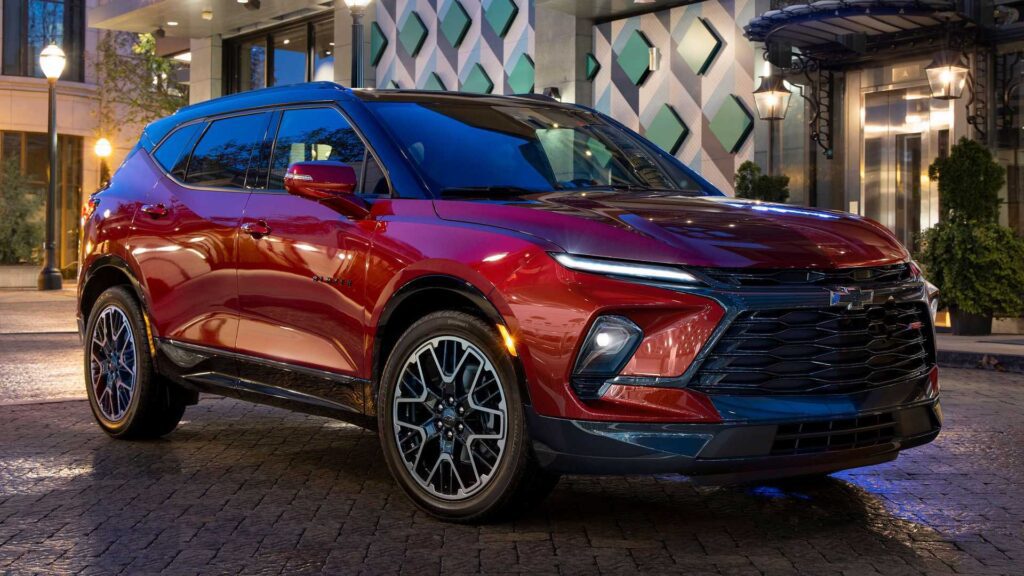
What the model lacks is that steering offers more feedback. But brakes are operated by a firm pedal that inspires confidence.
Like other SUV EVs in the market, the Chevy utilizes a regenerative braking system, and when active, it provides several levels of regen that are selectable depending on driver preference. It has the highest regen setting, allowing for one-pedal driving.
Range, Charging, and Battery Life
We have said, that the RWD RS model boasts of the highest EPA estimated driving range with 520 km. But the same model, when compared with AWD, then there is only 450 km. Further, even AWD LT is also capable of the same range.
The Chevrolet Blazer EV is capable of charging on a DC fast charger. Chevrolet claims that the DC fast charger can charge up to 190 kW and add about 125 km of range in just 10 minutes.
Interior, Comfort, and Cargo
The Chevrolet Blazer EV is aiming to please with its two-row spacious front and rear seats. To lure in Gen Z, all models come with a sporty interior design motif that nicely matches the SUV’s aggressive exterior styling.
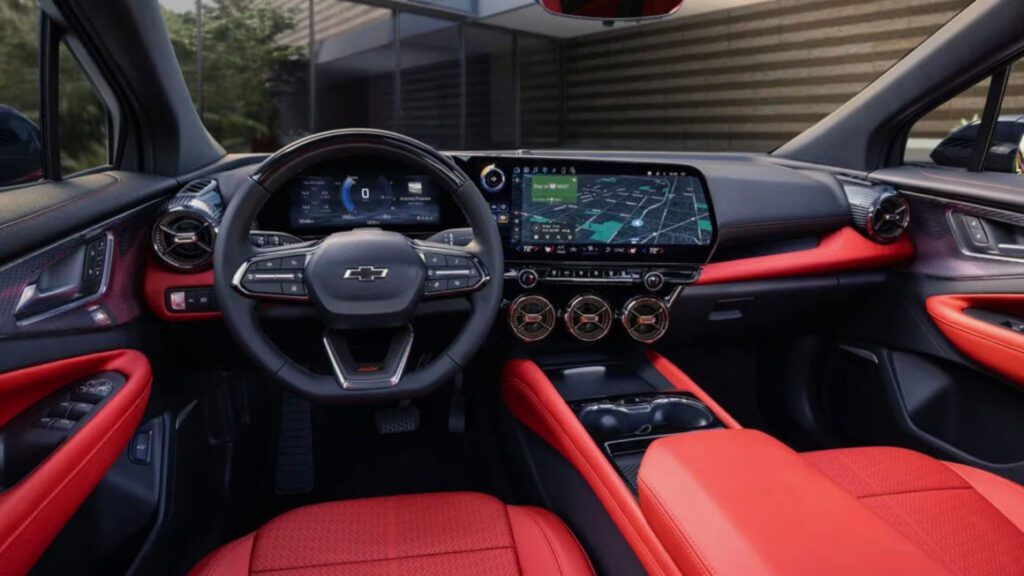
Chevrolet has adopted a two-tone black-and-red colour scheme. But a monotone look is available. I am now coming to space.
By folding the rear seats down, it expands the 26 cubic-foot cargo area to a much larger 60 cubic-foot space with a flat floor that’ll make it easier to load bulkier items.
Infotainment and Connectivity
Do you think Chevrolet will sell a car without an infotainment system? Well, wrong as their target market has been young people.
Hence, the need for a large 17.7-inch infotainment display that’s canted slightly toward the driver and framed on the left and the bottom by physical controls for the climate control system and a volume knob.

The current infotainment also has a secondary 11.0-inch display that presents the driver with gauges and other driving info. The system has GM’s latest version and uses Google Built-In apps.

With Spotify, Waze, and Google Maps, driving is a breeze. The car doesn’t have Apple CarPlay and Android Auto connectivity. That may be a cause of concern, but it is still fun to use as it also gives the number of route charging stations.
Warranty and Maintenance Coverage
Chevrolet brand provides standard coverage limits for the Blazer EV’s electric powertrain components. It includes the first maintenance visit, but overall coverage doesn’t come close to that of the Hyundai Ioniq 5. But here are the details:
- Limited warranty covers three years or 57,000 km ( whichever comes first).
- The powertrain warranty covers five years.
- Complimentary maintenance covers during one maintenance visit
- Electric components are covered for eight years.
Safety and Driver-Assistance Features
Chevrolet is building a host of driver assistance portals which is industry standard. It includes automated emergency braking, lane-keeping assist, and a parking assist feature. General Motors Super Cruise’s hands-free driving system is also available.

The downsides
- I am getting accustomed to the shorter length of the charging cord and the process of charging.
- There is a problem and current fluctuations across public DC fast chargers. When fluctuations are this extreme, sensors within the vehicle may see that as a fault and reduce the rate of charging.
- We found its acceleration to be adequate but not exactly thrilling.
Real World Performance
The whole package of Chevrolet Blazer EV RS is a representative example of a slightly above-middle-of-the-road Blazer, with a respectable 288 hp with 333 lb-ft of torque that’s enough to propel the 5,235-pound SUV to 60 mph in 6 seconds flat.
While the Blazer RS goes through the quarter-mile in a respectable 14.8 seconds at a speed of 93.1 mph. But if we compare the car with its contemporaries, then Hyundai’s dual-motor AWD Ioniq 5 makes the sprint to 60 in 4.4 seconds, Ford’s Mustang Mach-E does it 4.8, and Nissan’s 389-hp two-motor Ariya gets it done in 5.0 seconds.
While the current Blazer RS is more in line with the gas-powered midsize crossovers. But Chevrolet has assured that Blazer EV SS will come with dual motors delivering significantly more output: 557 hp and 648 lb-ft, which will be more in line with the Hyundai’s Ioniq 5 N performance model or a Tesla Model Y Performance.
Related Posts





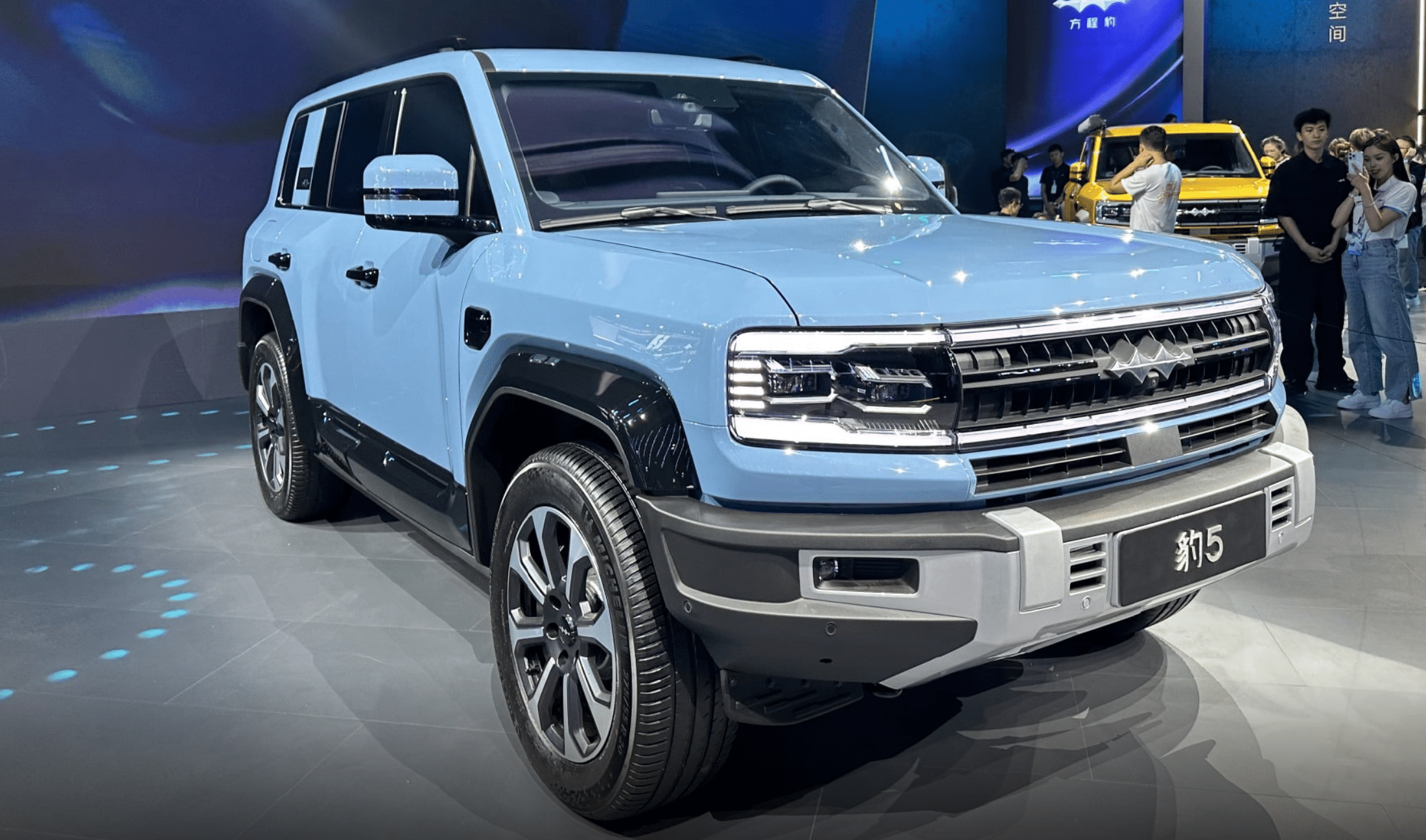

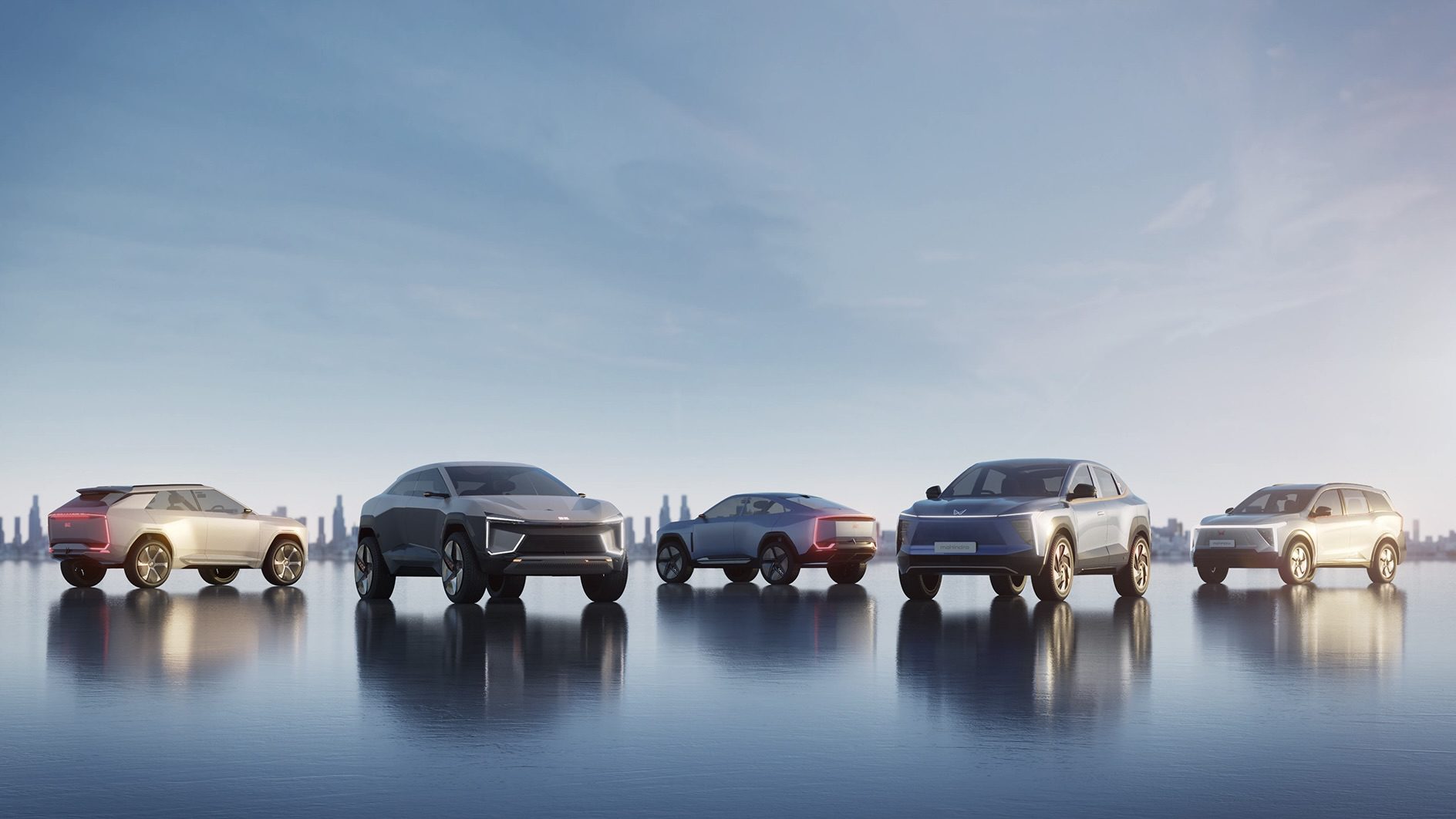
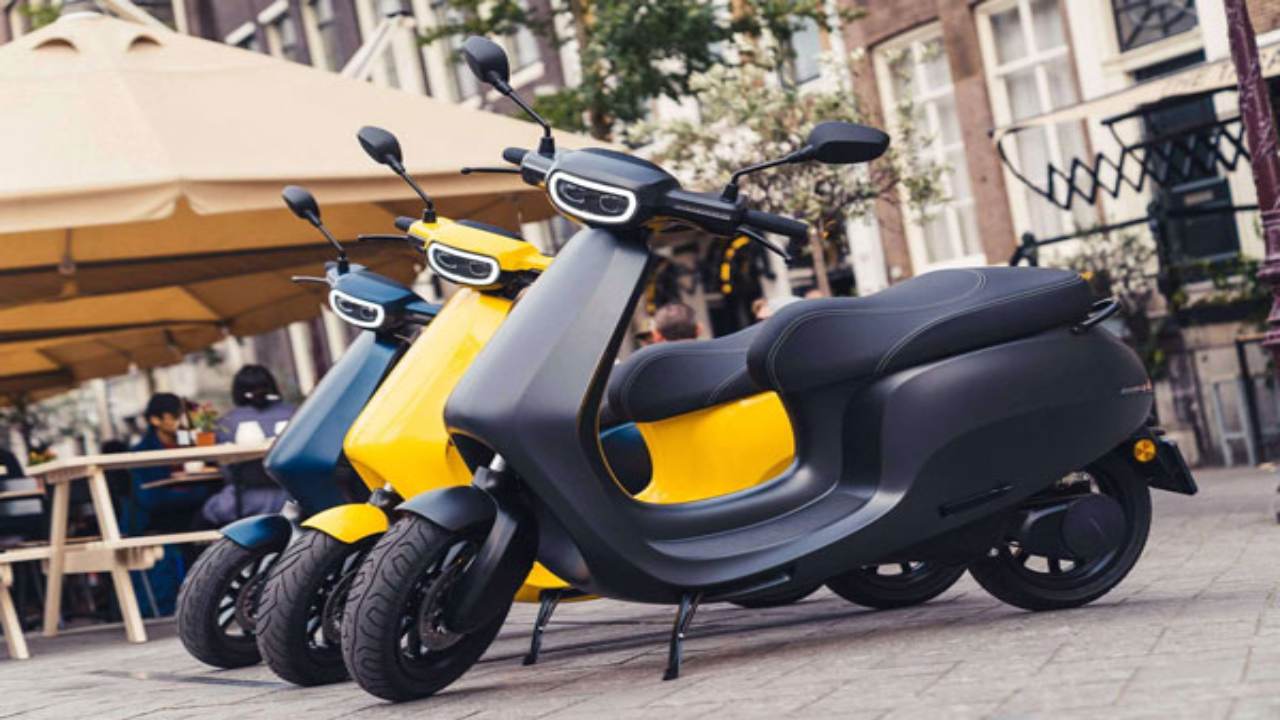


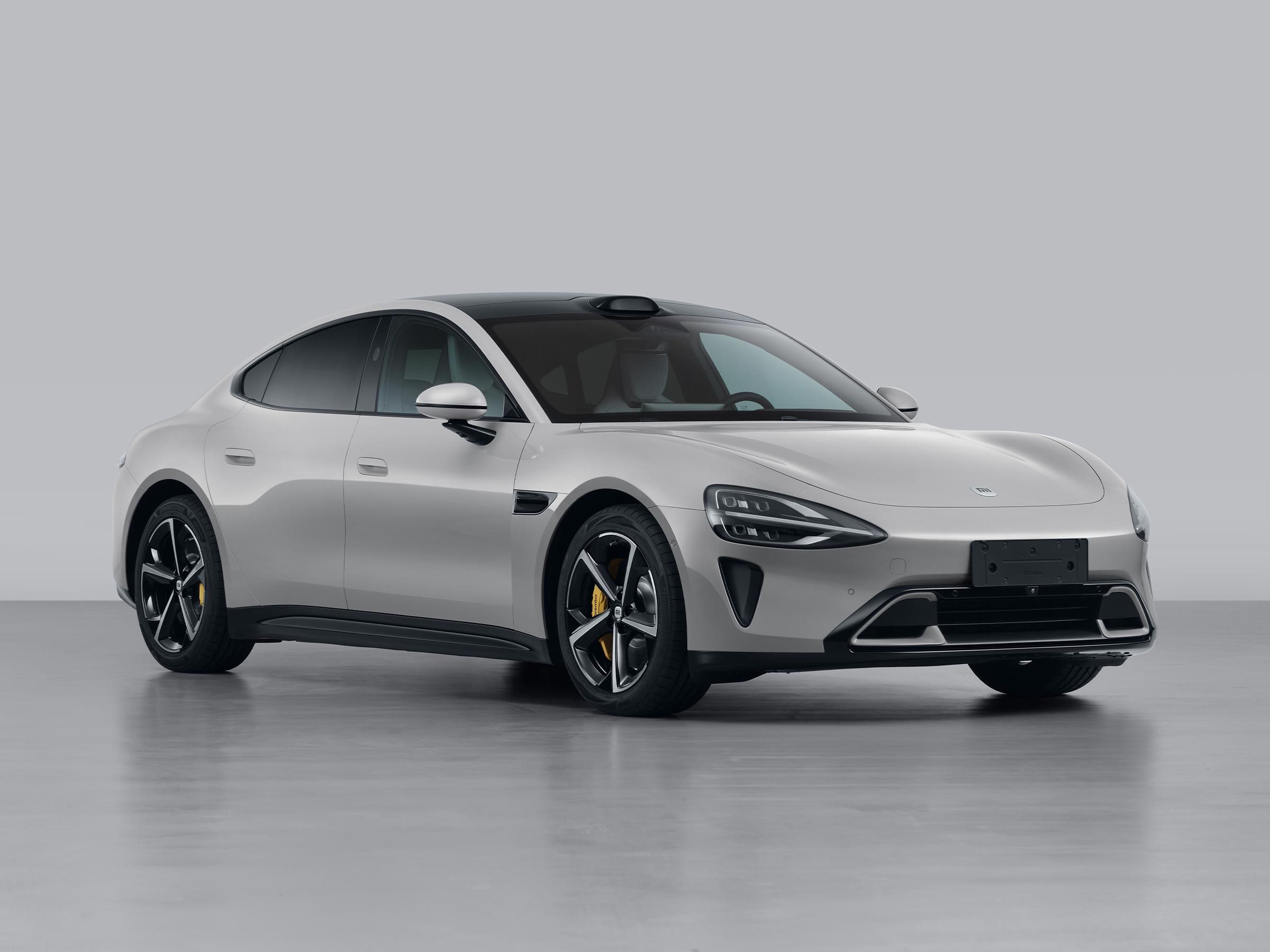

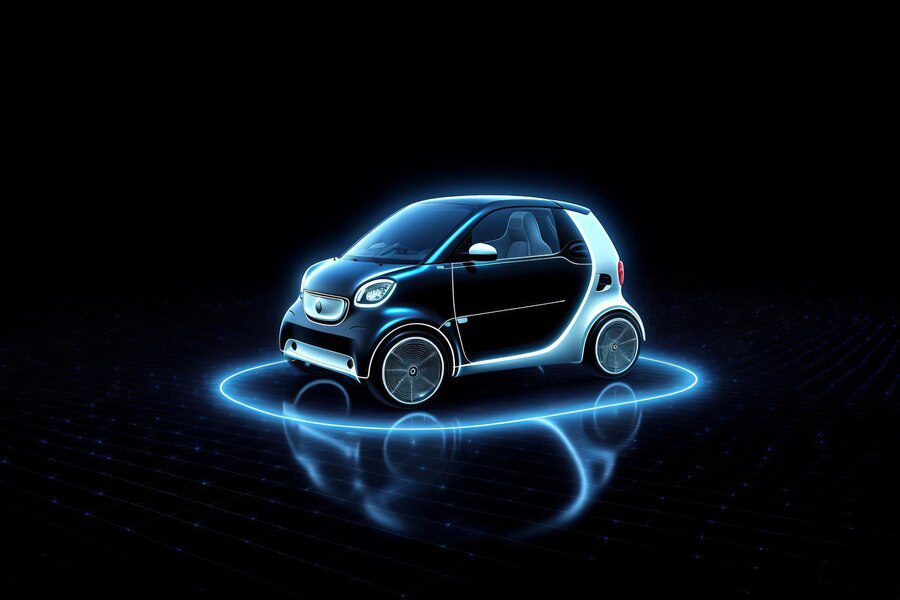
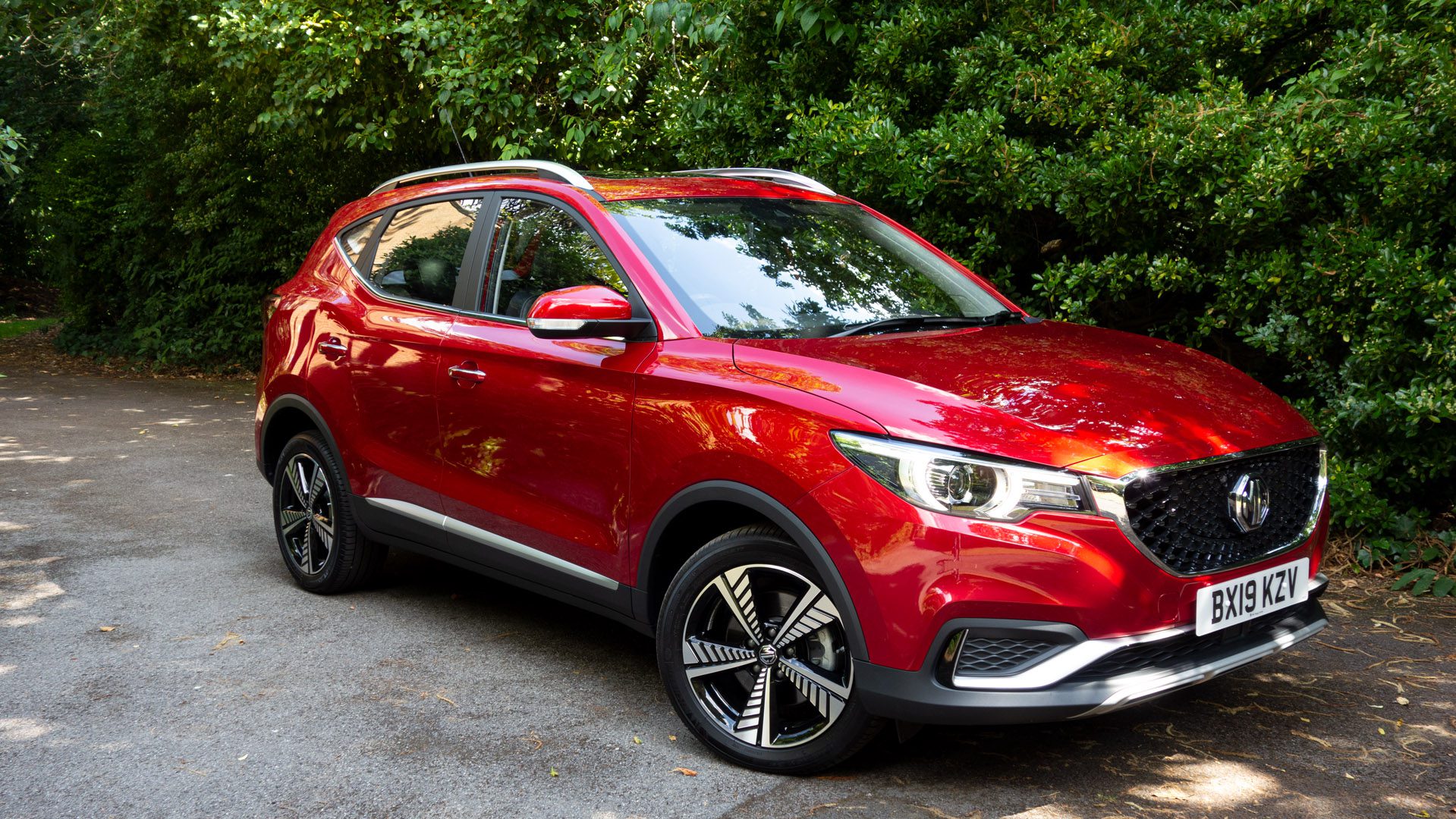
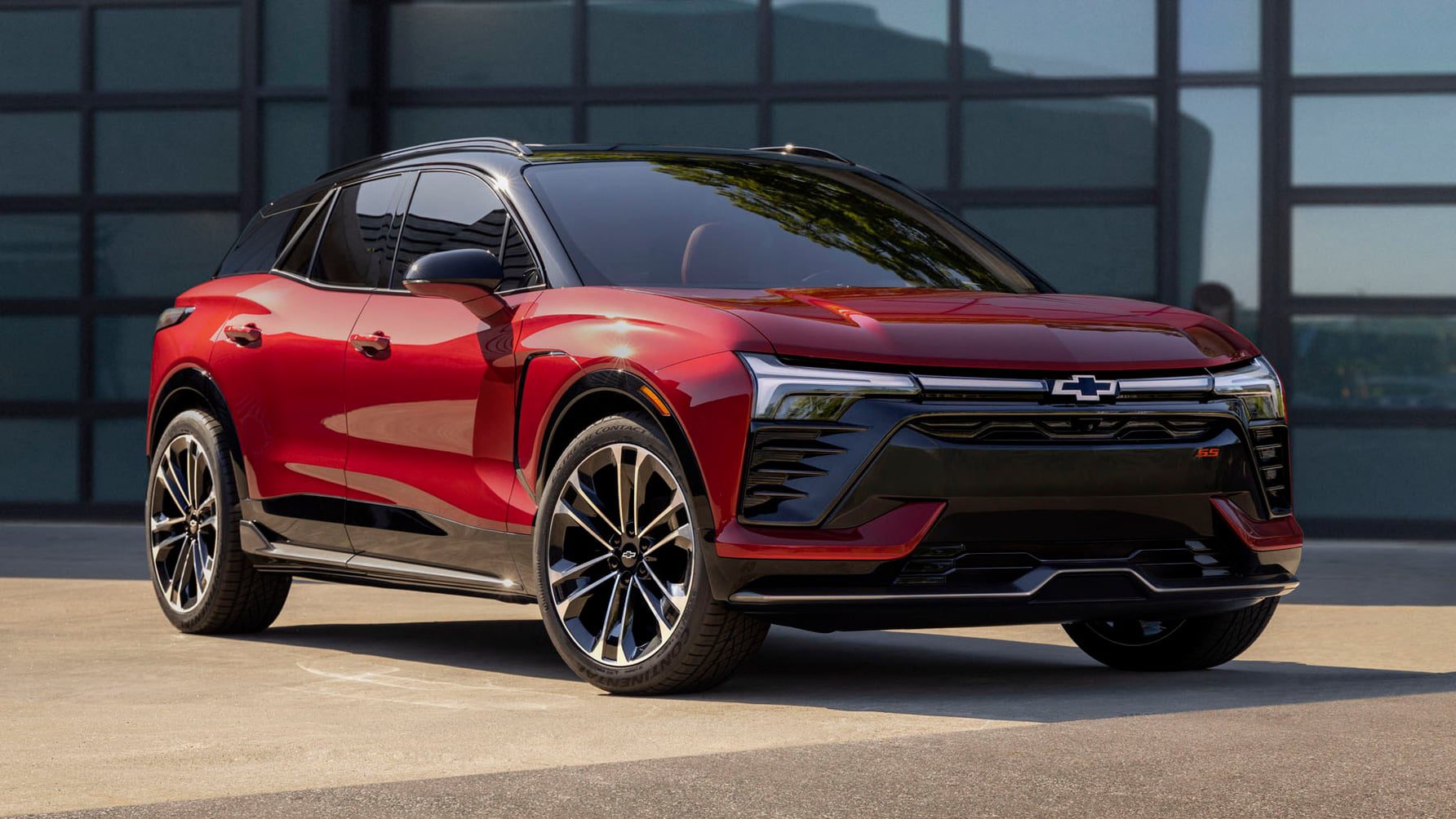
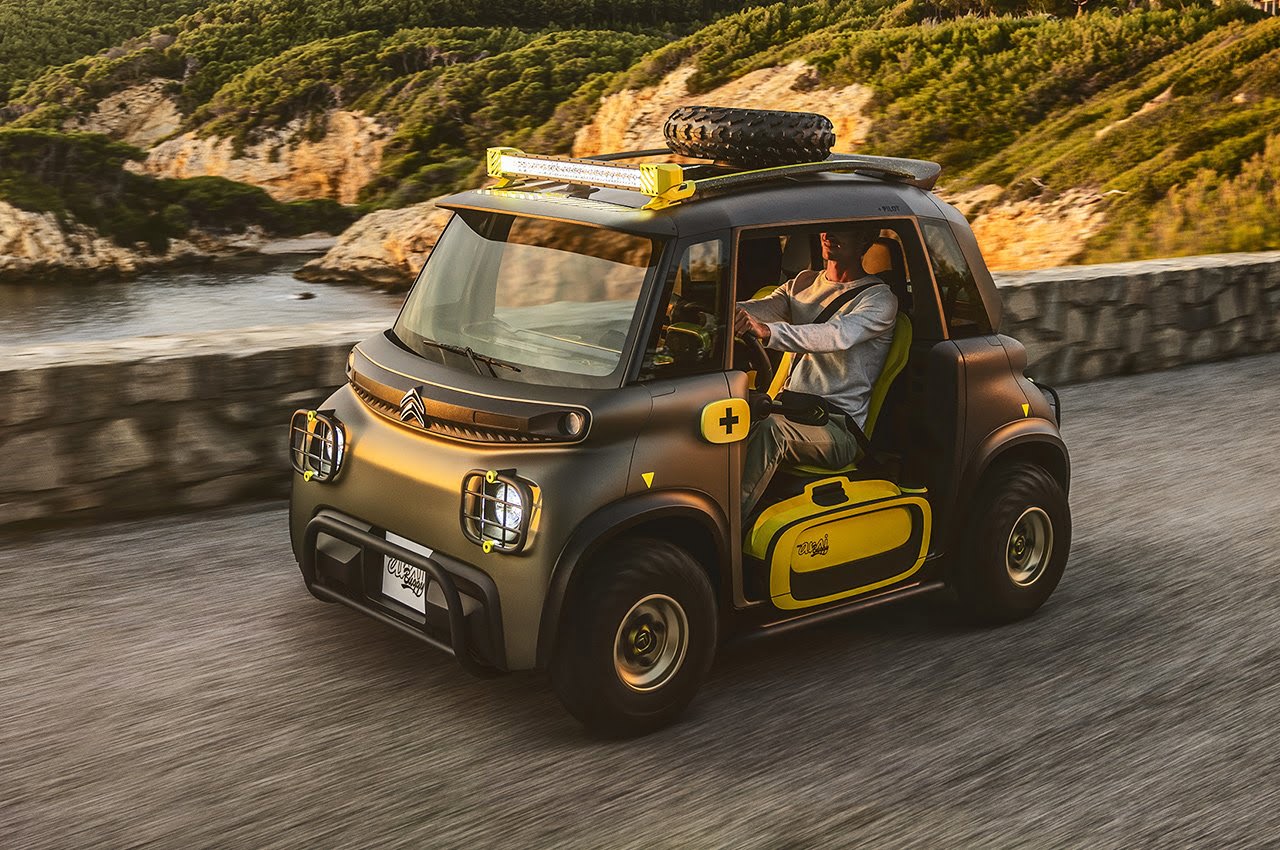

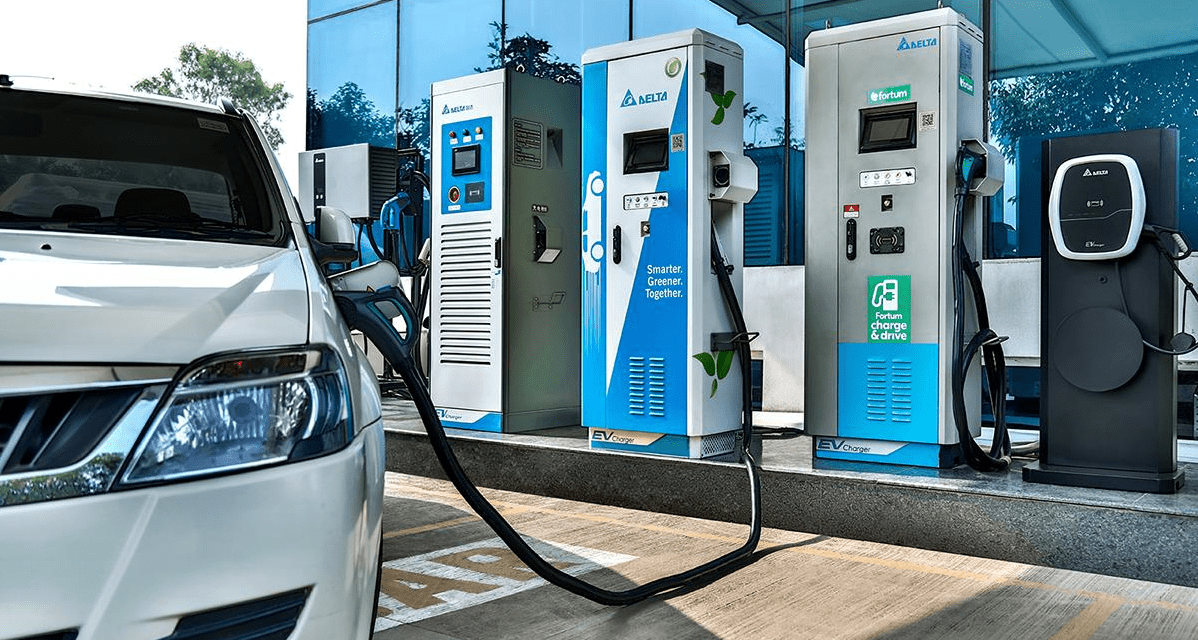
Leave feedback about this